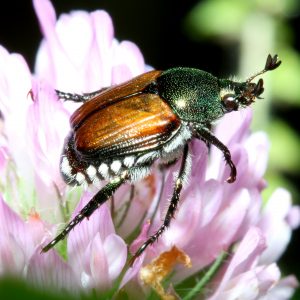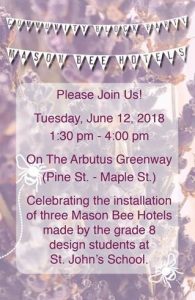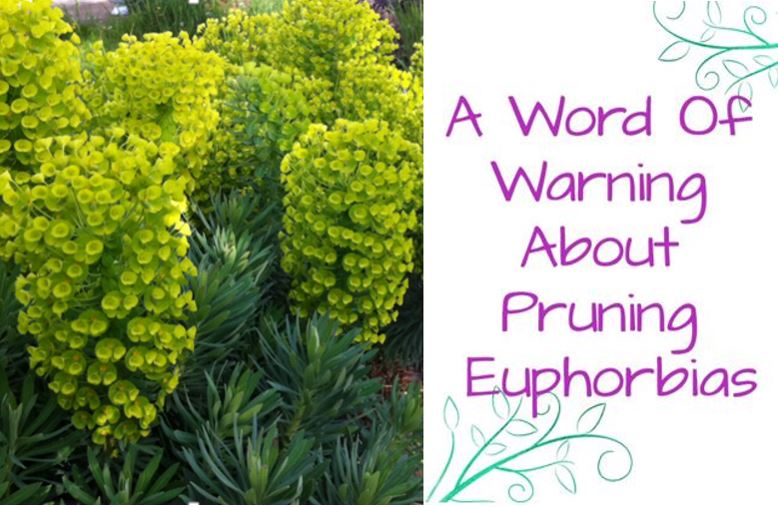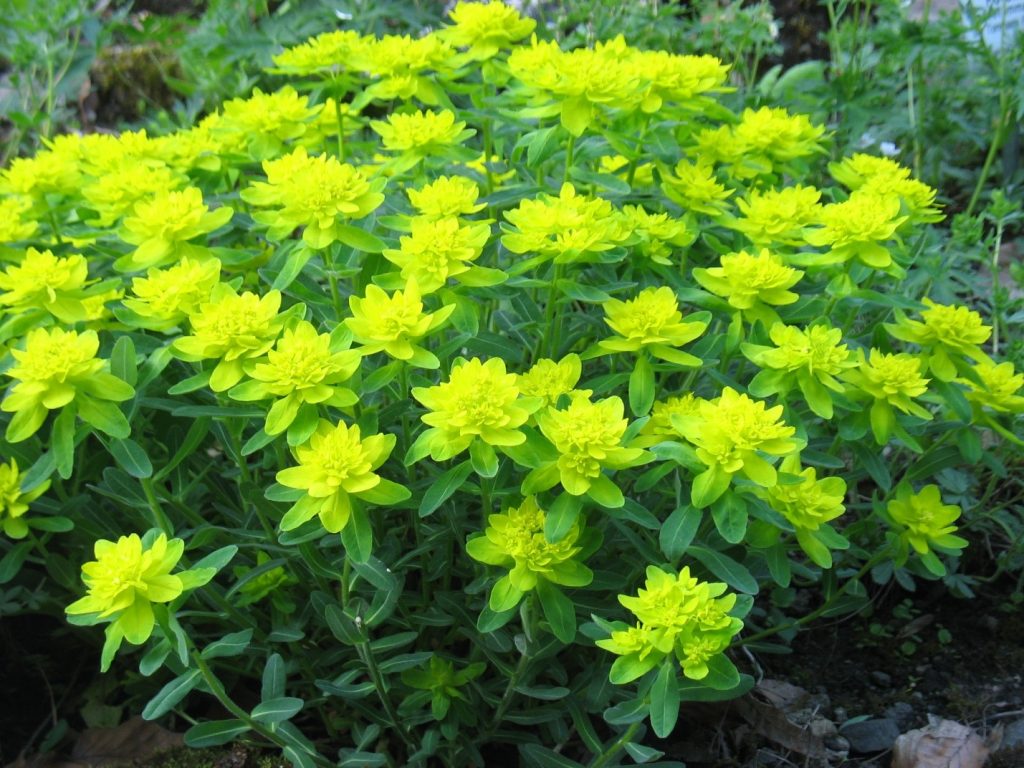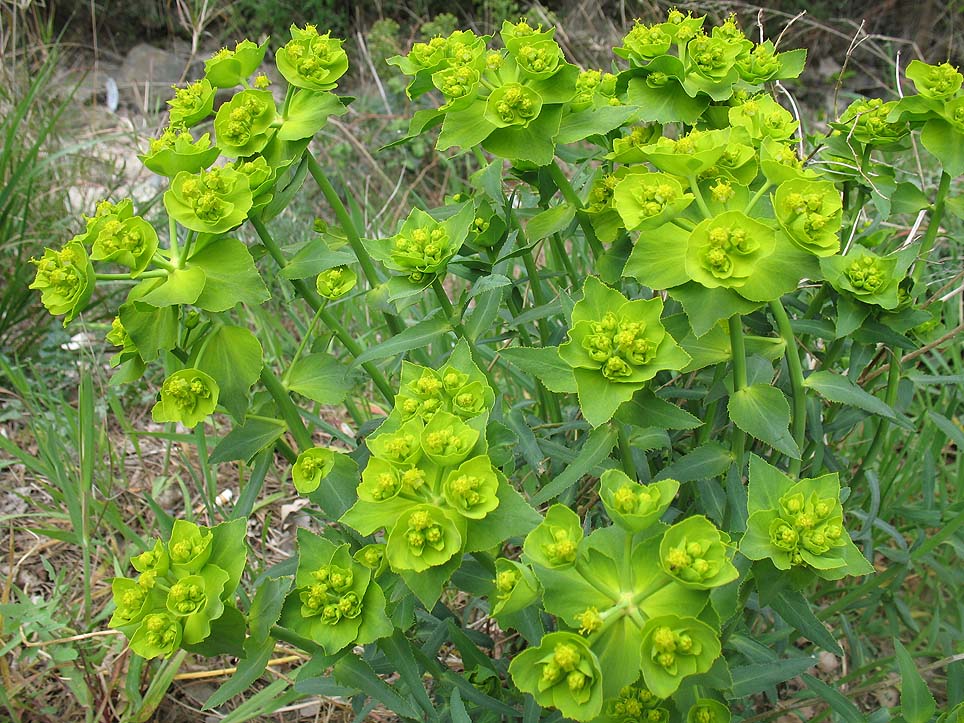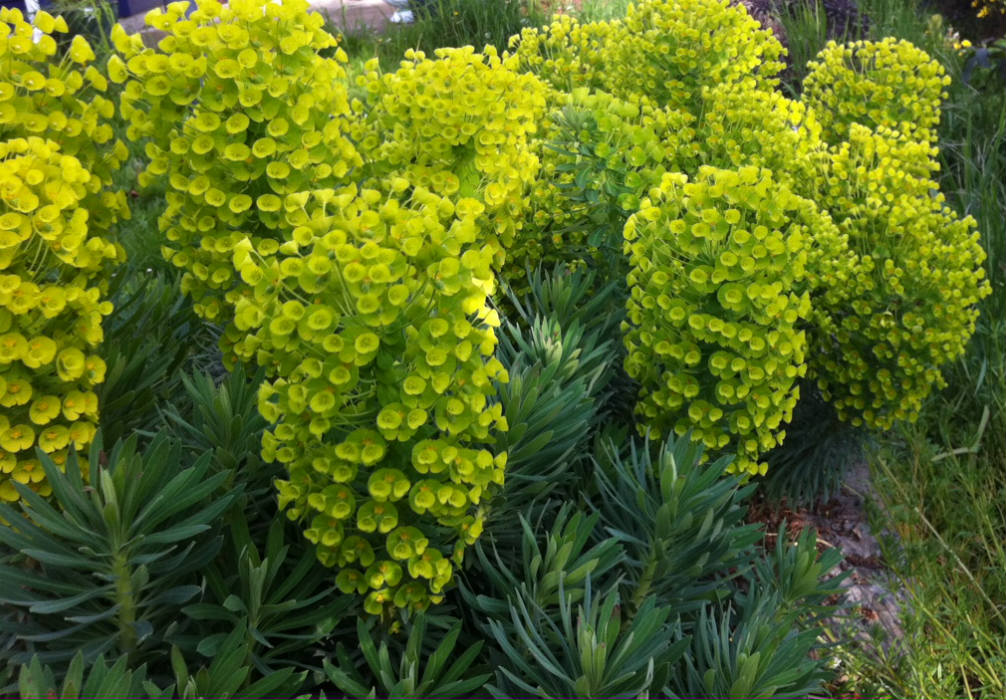1) This is the time of year to start thinking about bulbs for spring if you wish. Choose healthy, firm bulbs and store in a cool, dry place [then plant according to the directions for each type of bulb] over the next couple months. Adding a small amount of bone meal in each hole when planting will help establish the root system and promote flowering. Here are planting levels, heights and bloom times for common bulbs:
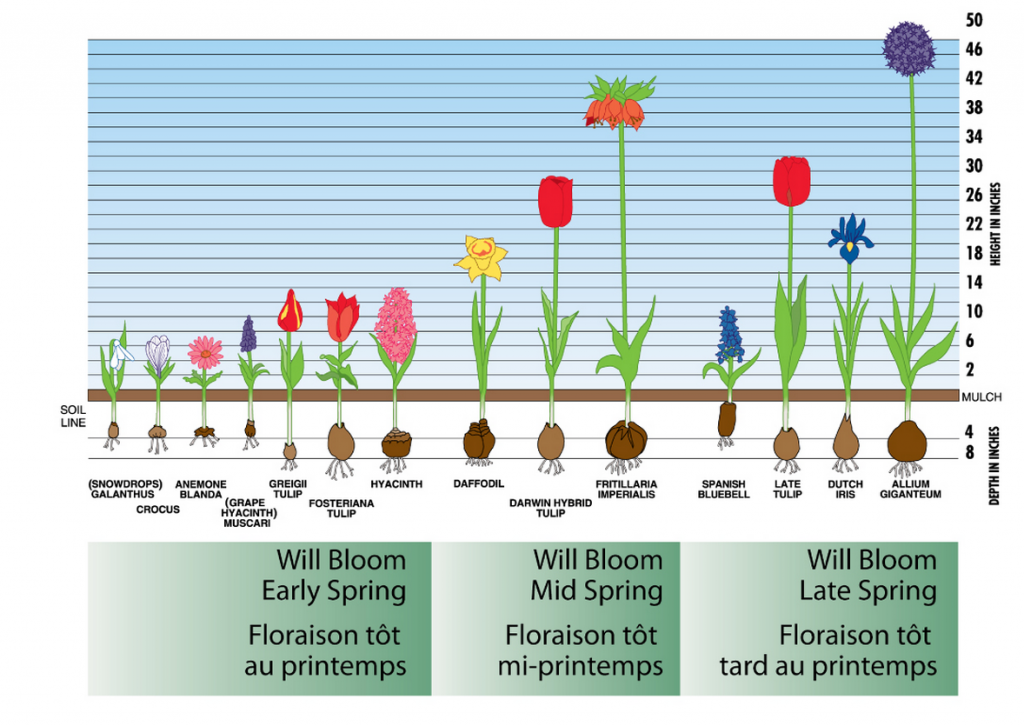
longfield-gardens.com
2) Keep weeding and deadheading, and keep grass trimmed in and around your plot as usual.
3) Keep picking produce regularly, and also herbs for drying so you can have a little taste of summer later in the year!
4) When summer veggies and flowers are finished, remove the spent plants and compost healthy parts of the plants.
5) Please do not compost diseased leaves, shoots and plants. If disease-causing spores, fungus or viruses are present, they will survive in compost. Information on Club Root, recently discovered in Section 3, will be posted soon. The principles to avoid the spread of Club Root disease are the same as Rust and Blight. Please take a moment to review the information and photos about disease management to help keep all Maple Community Garden plots healthy http://maplecommunitygarden.ca/gardening-resources/disease-management/
6) It’s also a good time to harvest seeds from flowers in your gardens to save for next year. If you’re inspired, throw some over the North fence so we can create a bit of a wildflower garden out there and provide more food for the bees too J
7) Begin Fall garden cleanup of your plot. All plots must be cleared of summer/fall weed growth and all finished plants by November 1 (per Annual Contract).
8) You can amend your soil with Dolomite lime (1 cup for each of our small beds should do) and then one week later add mushroom manure or compost. Dig in some organic fertilizer as well (see recipe below) and you are ready to plant fall veggies.
9) Maple Community Garden is an organic gardening area, and organic fertilizer contains many micronutrients of value for plants which release slowly without washing away as quickly as chemical fertilizers.
Recipe for Homemade Organic Fertilizer
2 parts Blood meal Nitrogen (N)
3 parts Bone meal Phosphorus (P)
1 part Kelp meal Potassium (K)
The above ingredients are found at most garden centres and feed stores, and this recipe provides an N-P-K ratio of approximately 4-5-4 to 5-8-5. Nitrogen promotes vigorous growth, phosphorus improves flowering and root system growth, and potassium assists with fruit quality, root growth and reduction of disease.
10) Set out transplants and seedlings of Fall/Winter vegetables such as spinach, lettuce, purple flowering broccoli, chard and kale in September and then plant garlic later in October – have fun!

